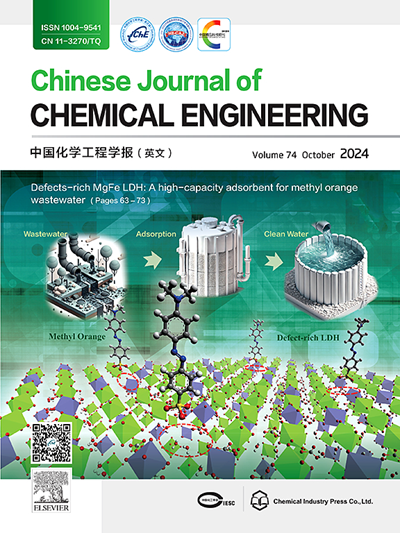Enhanced electrocatalytic activities in TiO2-Sulfur nanoparticles decorated graphene nanocomposite electrode for detecting formaldehyde compound
IF 3.7
3区 工程技术
Q2 ENGINEERING, CHEMICAL
引用次数: 0
Abstract
The unique properties of TiO2-sulfur (TiO2-S) modified graphene nanocomposite electrode (GPE/TiO2-S) in the electrochemical sensing of formaldehyde compound has been evaluated. We prepared TiO2-S by hydrothermal method and modified the graphene nanocomposite electrode by applying electrochemical cyclic voltammetry (CV) approach. The TiO2-S nanocomposite was characterized by X-ray diffraction (XRD), while the GPE/TiO2-S was examined by scanning electron microscopy (FESEM) and X-Ray fluorosense (XRF) techniques. TiO2-S has a grain size of 19.32 nm. The surface morphology of the GPE/TiO2-S nanocomposite shows a good, intact, and tightly porous structure with TiO2-S covers the graphene surface. The content of optimized GPE/TiO2-S electrodes is 41.5% of graphene, 37.8% of TiO2, and 12.4% of sulfur that was prepared by mixing 1 g of TiO2-S with 0.5 g of graphene and 0.3 mL paraffin. The GPE/TiO2-S electrode produces a high anodic current (Ipa) of 800 μA and a high cathodic current (Ipc) of −600 μA at a scan rate of 0.1 V·s−1 using an electrolyte 0.01 mol·L−1 K3[Fe(CN)6] solution containing 150 mg·L−1 formaldehyde. The limit of detection can reach as low as 9.7 mg·L−1 with stability with Horwitz ratio value as low as 0.397. The composite electrode also exhibits excellent slectivity properties by showing clear formaldehyde sugnal in the presence of high concentration of interfering agent. GPE/TiO2-S electrode should find potential application of formaldehyde detection in food industries.

求助全文
约1分钟内获得全文
求助全文
来源期刊

Chinese Journal of Chemical Engineering
工程技术-工程:化工
CiteScore
6.60
自引率
5.30%
发文量
4309
审稿时长
31 days
期刊介绍:
The Chinese Journal of Chemical Engineering (Monthly, started in 1982) is the official journal of the Chemical Industry and Engineering Society of China and published by the Chemical Industry Press Co. Ltd. The aim of the journal is to develop the international exchange of scientific and technical information in the field of chemical engineering. It publishes original research papers that cover the major advancements and achievements in chemical engineering in China as well as some articles from overseas contributors.
The topics of journal include chemical engineering, chemical technology, biochemical engineering, energy and environmental engineering and other relevant fields. Papers are published on the basis of their relevance to theoretical research, practical application or potential uses in the industry as Research Papers, Communications, Reviews and Perspectives. Prominent domestic and overseas chemical experts and scholars have been invited to form an International Advisory Board and the Editorial Committee. It enjoys recognition among Chinese academia and industry as a reliable source of information of what is going on in chemical engineering research, both domestic and abroad.
 求助内容:
求助内容: 应助结果提醒方式:
应助结果提醒方式:


